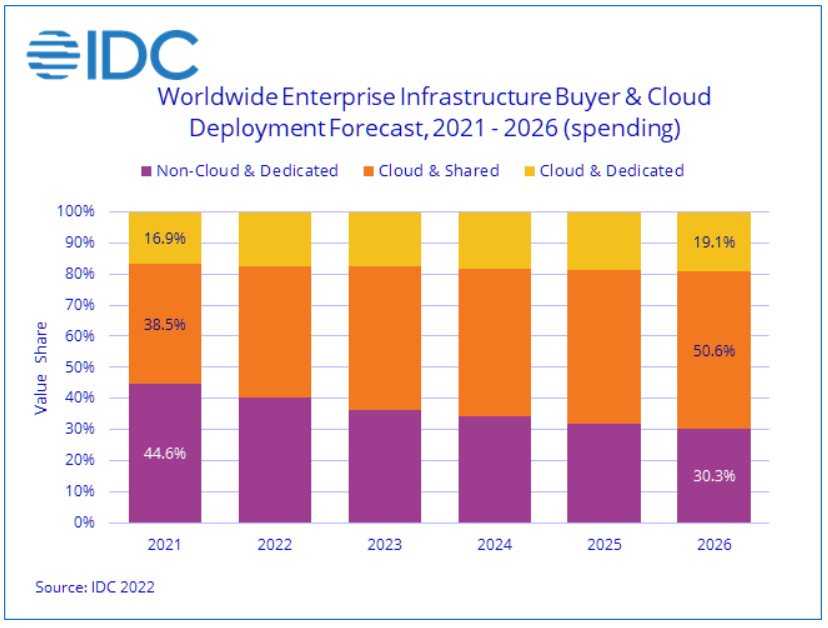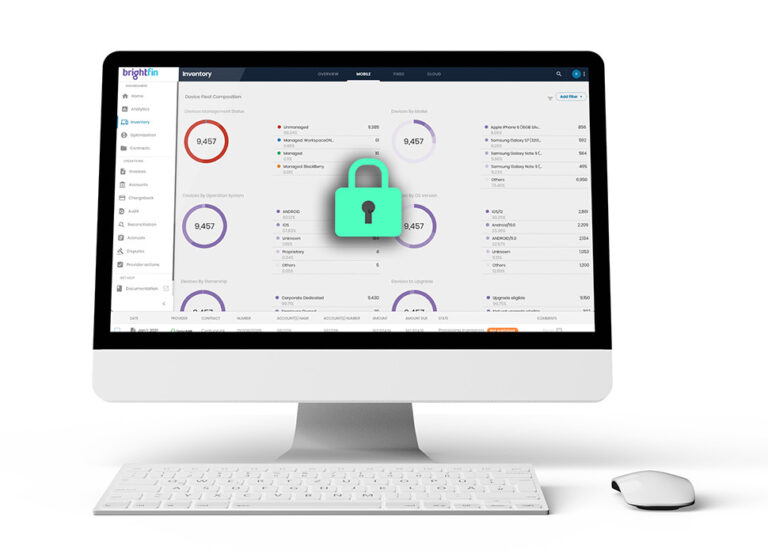Cloud spending in 2022
Cloud spending has been steadily increasing in recent years, and IT budgets are feeling the squeeze.
Cloud expenses are the costs associated with cloud computing. These expenses include the cost of buying, maintaining and operating software, as well as the cost of data storage and other services associated with cloud computing.
Research firm IDC predicts, “For the full year 2022, IDC is forecasting cloud infrastructure spending to grow 22% compared to 2021 to $90.2 billion – the highest annual growth rate since 2018 – while non-cloud infrastructure is expected to grow 1.8% to $60.7 billion. The increased forecast for both segments is partially driven by inflationary pressure and expectations of higher systems prices during 2022 as well as improvements in the supply chain in the second half of the year.”

Cloud spending categories
Cloud spending can be divided into three categories:
Infrastructure-as-a-Service (IaaS) – This is typically where most organizations start their journey into the world of public cloud computing. It includes services like Amazon Web Services (AWS), Google Cloud Platform (GCP) and Microsoft Azure that provide virtual machines or containers that run on a shared infrastructure that you can access over the internet using your own virtual machine images (VMs). These services also provide storage options that allow you to store your data in the cloud instead of keeping it on-premises in physical servers or storage arrays.
Platform as a Service (PaaS) – PaaS allows you to build, deploy and scale applications without worrying about managing servers or infrastructure. PaaS is a great option for organizations looking to develop new applications or migrate existing ones onto the cloud quickly. It’s also a cost-effective solution for companies that want an all-inclusive package that includes everything they need to run their business in the cloud.
Software as a Service (SaaS) – This is a very common form of cloud expenditure, and it covers solutions like Salesforce, Office 365 and Google Drive. SaaS applications are hosted on the cloud and accessed via a browser or mobile app, so there’s no need to install or maintain any software locally. In addition to saving on hardware costs, SaaS helps businesses achieve agility and scalability — they can access their data from anywhere at any time.
Cloud analytics and governance
Cloud analytics and visibility help you stay on top of your cloud spending, so you can make sure you’re getting the most value from your cloud resources.
The key is to know what you’re paying for and why. That’s where cloud analytics and visibility come in—they allow you to monitor your usage patterns, identify potential cost savings, and ensure that your organization is getting the most out of its investment in the cloud.
Cloud governance is the practice of ensuring that your cloud infrastructure meets your business needs and complies with the security, privacy, and compliance regulations that apply to your organization. It’s all about balancing the need for flexibility with rigorous adherence to policies and procedures.
Cloud governance requires a proactive approach to management. By establishing policies and procedures early on, you can avoid problems down the road. This is especially true when it comes to security and compliance issues.
The best way to implement cloud governance is on a case-by-case basis. There are no set rules for how to do it because every company has different needs stemming from its specific industry, location, and culture.





